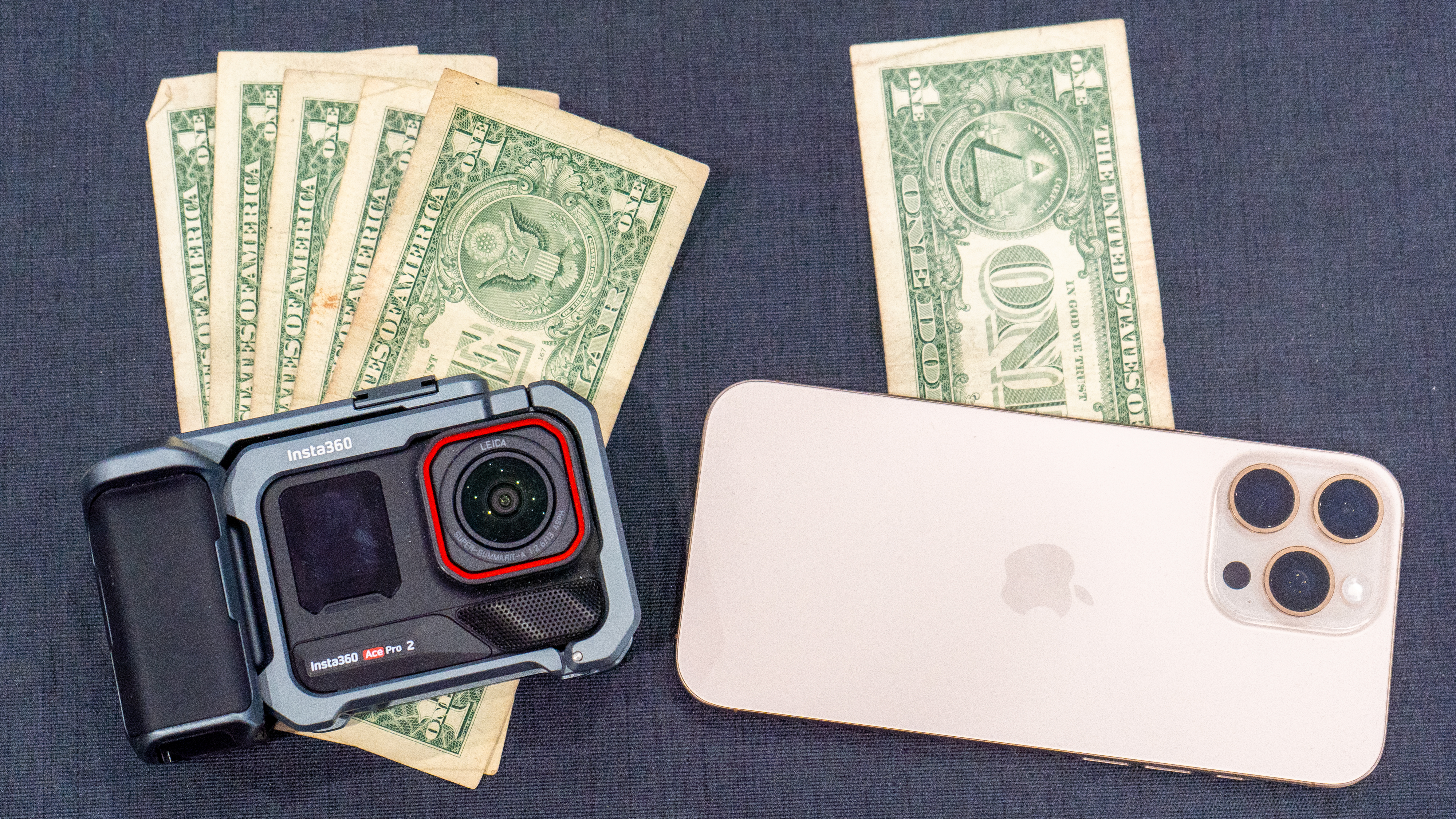The best waterproof camera in 2025: compact underwater cameras for fun and action
The best waterproof cameras are perfect for shooting on the beach, in the sea, or anywhere that other cameras dare not go!
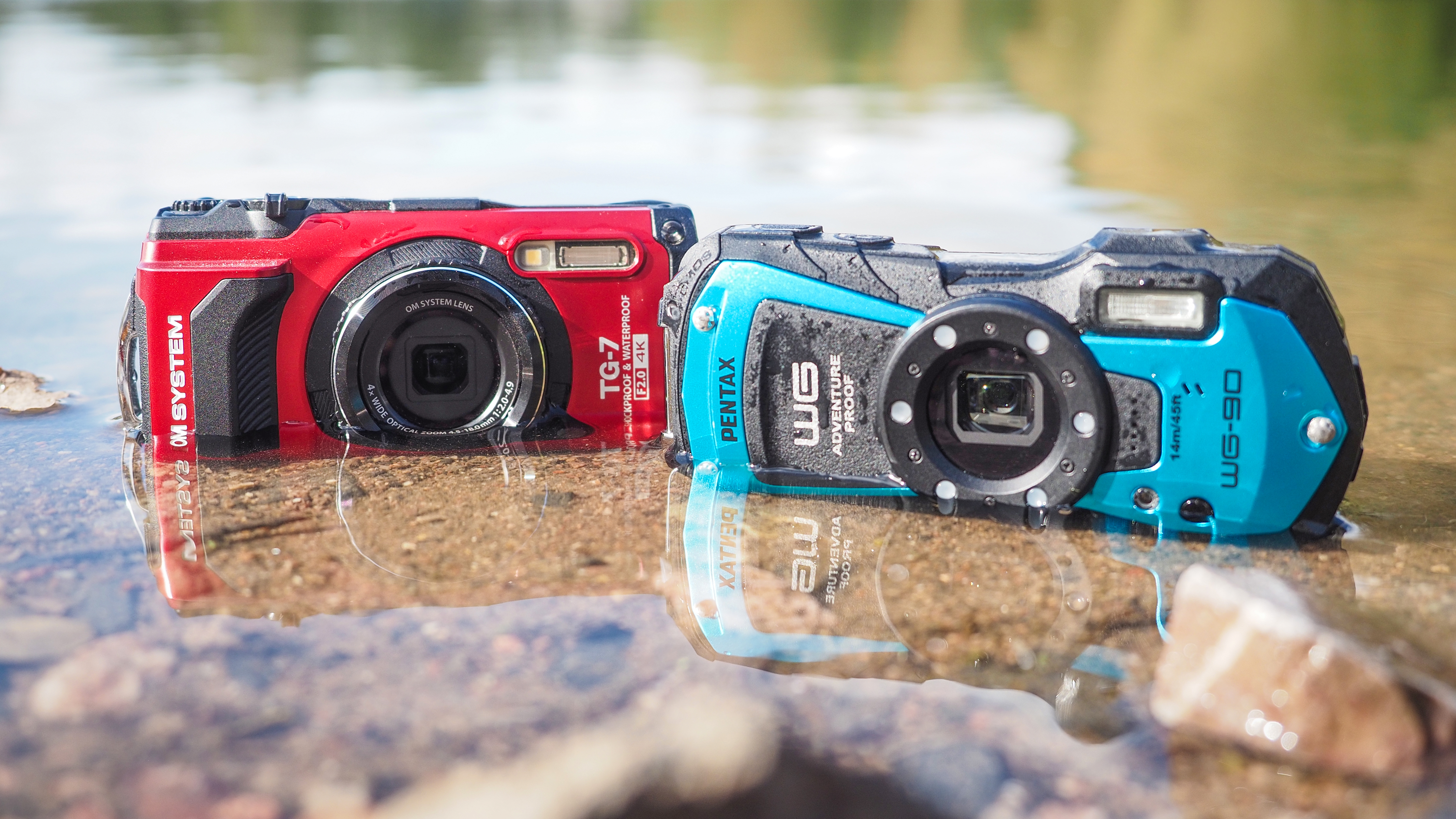
The best waterproof cameras are in higher demand than ever before. Obviously the main thing is that these are cameras that you can take in the pool at a swanky AirBnb vacation, or take to the beach when you're on vacation. And I love taking cool submerged shots for my social media!
However, the best waterproof cameras have had a huge uplift thanks to the demand for compact cameras – because really, that's what they are: compacts that withstand water. So you're getting something super small and pocketable, with built-in zoom lens that enables you zoom all the way in for close-ups, then all the way back out for group selfies and epic landscapes.
There are some trade-offs; these cameras have small sensors and are designed for simplicity, so their overall image quality and level of control won't be the same as the best mirrorless cameras. That said, they can still produce impressive stills and video – and some of them have phenomenal macro modes, too.
The weatherproofing on the best waterproof cameras often extends to being shockproof, freezeproof and crushproof, too, so you can take them to risky places like white water rafting or rock climbing that your "proper" camera couldn't dream of going!

I've been in love with waterproof cameras ever since having a toy one as a kid! Over the years I've used dozens of these cameras, and own a bunch of them myself. I take an OM Tough or Pentax WG camera with me in the glovebox of my car or in the bottom of my kit bag, because I always want to snap an underwater shot – or want to be able to keep shooting even in rain, dust and sand!
The Quick List
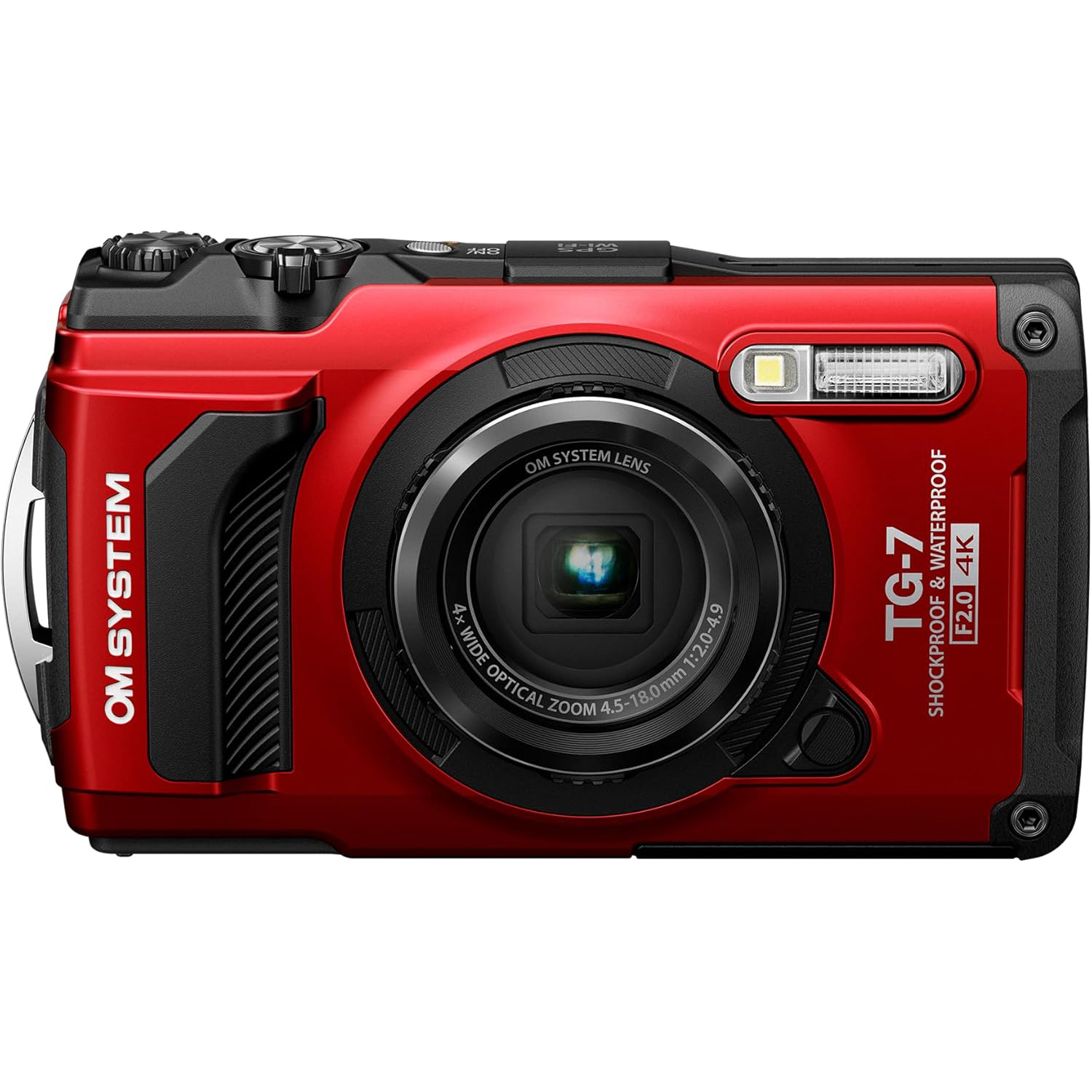
The best all-round waterproof camera delivers great images, 4K video, fun in-camera Art Filters, and some genuinely impressive macro shooting options – this one is my camera of choice.
Read more below
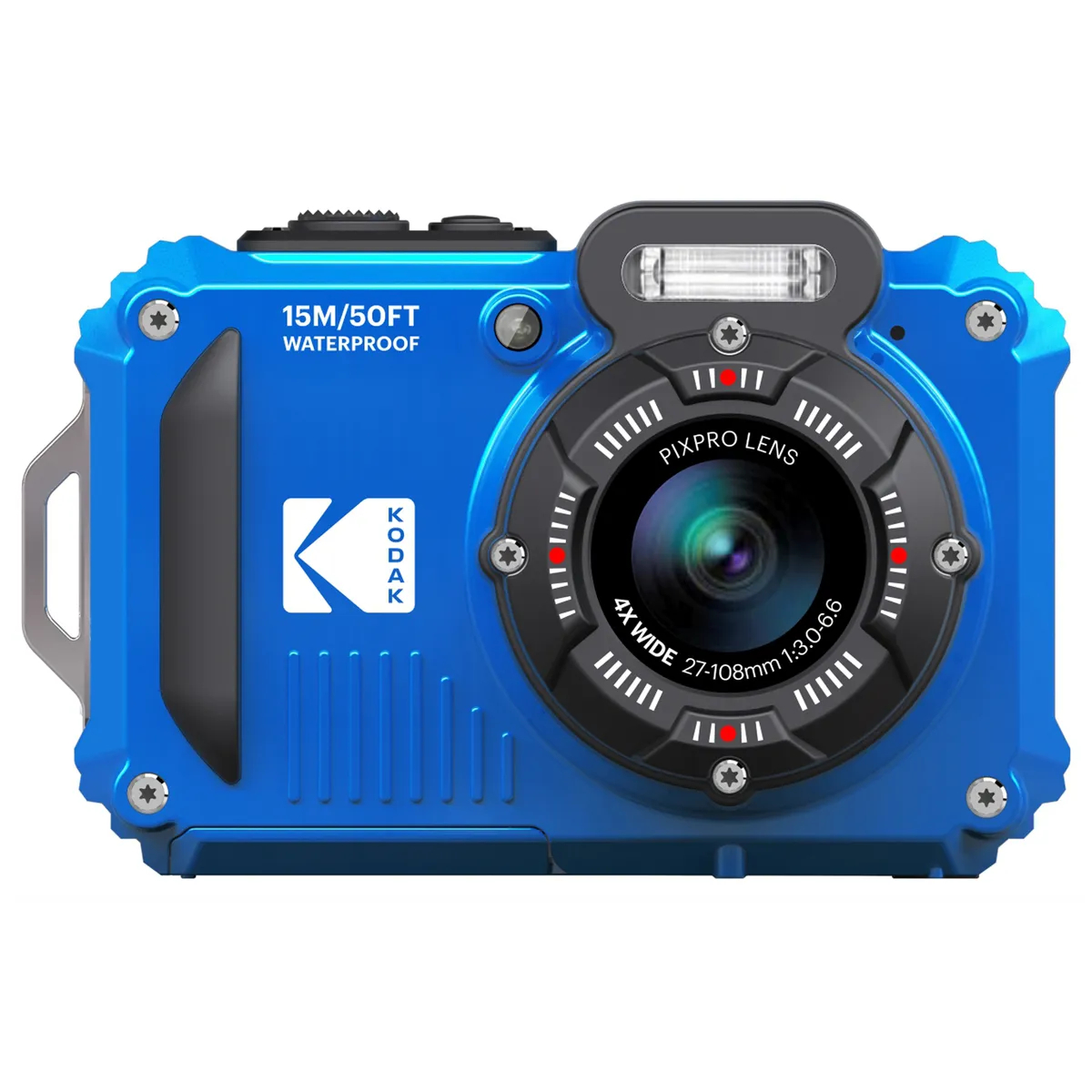
Kodak has made a splash (sorry!) with its affordable, popular compacts. This waterproof zoom is a great example of a user-friendly and capable camera that doesn't break the bank.
Read more below
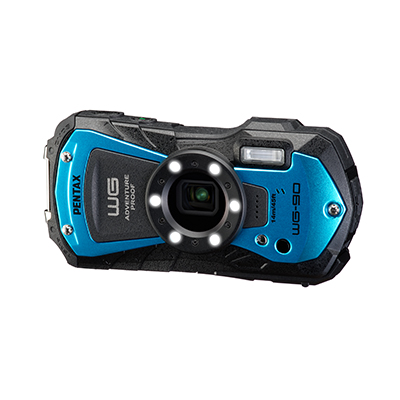
With its 16MP sensor, the WG-90 has the highest resolution on this list and is a more affordable alternative to the TG-7. Its built-in 5x zoom makes it great for use on dry land, too.
Read more below
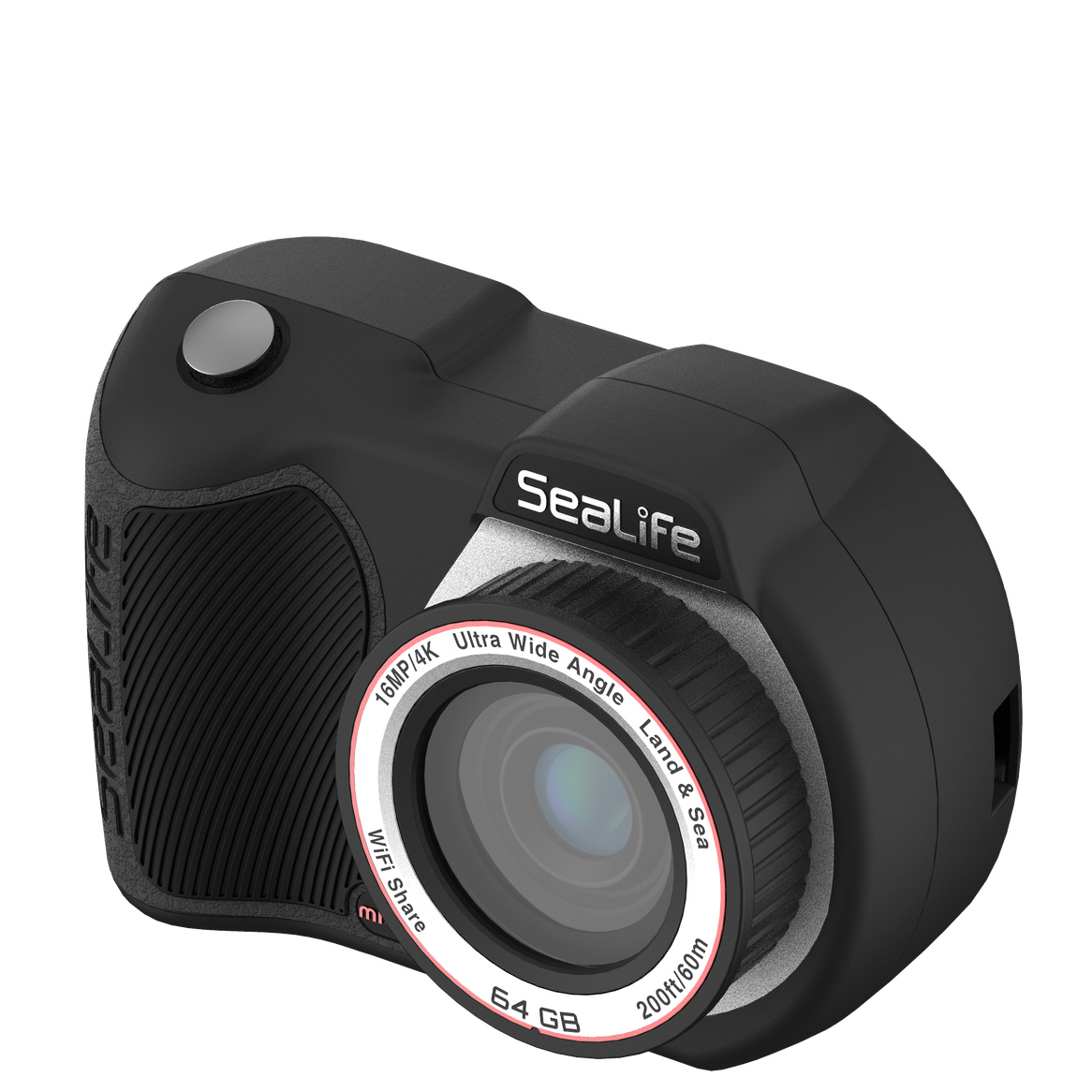
This is designed for snorkelers and divers, with optional high-power lights for use at depths of up to 200ft. There's no zoom though, so most useful for sub-aqua shooting than on dry land.
Read more below

It is easy to forget that action cams are underwater cameras too! The DJI Osmo Action 4 is good value and can be used down to 59 feet – though the newer Action 5 is a better pure action cam.
Read more below
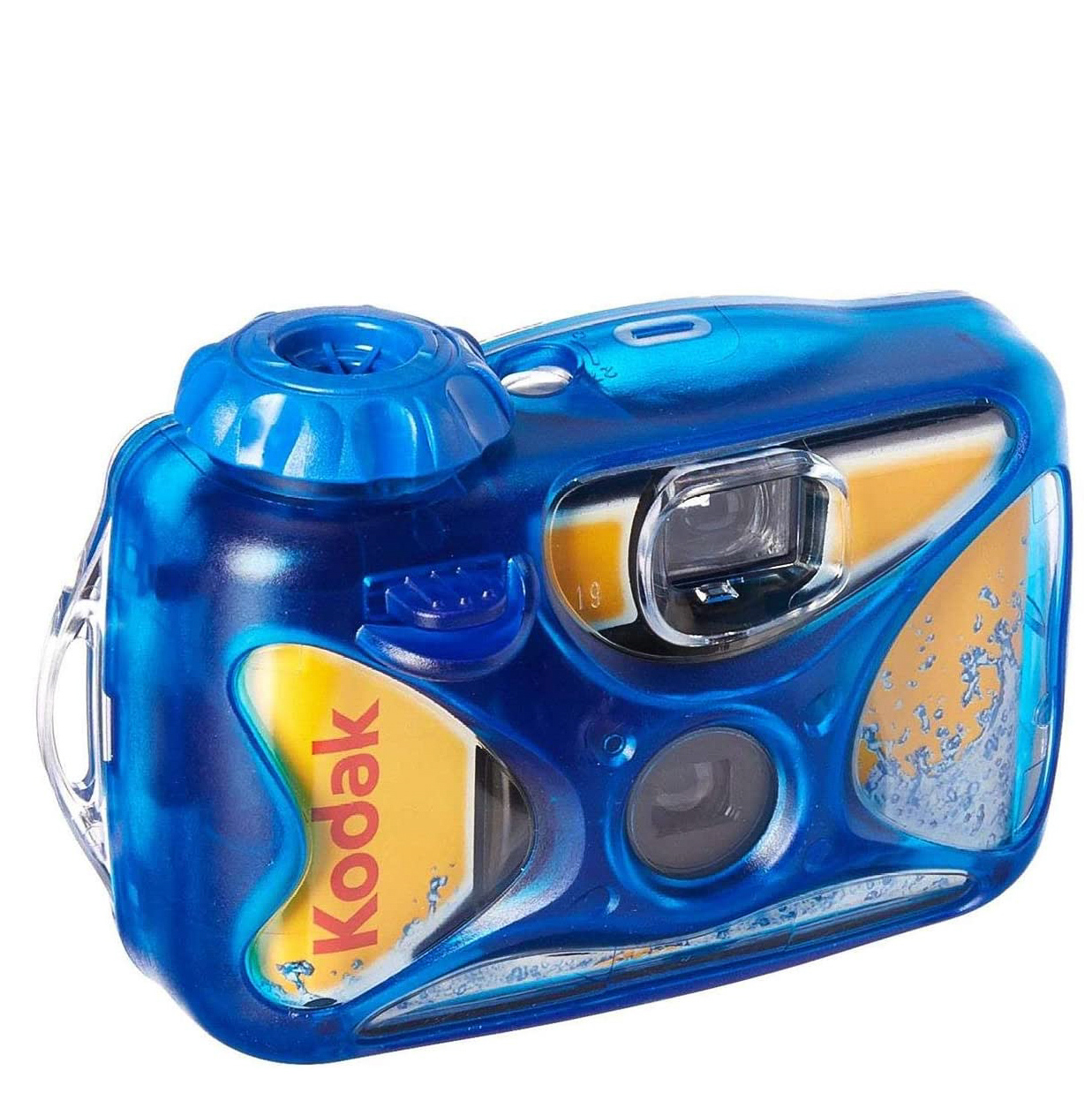
Looking for a cheap option for one-off occasions? This single-use camera might be for you. Just remember that you'll have to pay to process the included film – and it won't shoot video!
Read more below
Best waterproof cameras
Why you can trust Digital Camera World
Best waterproof camera overall
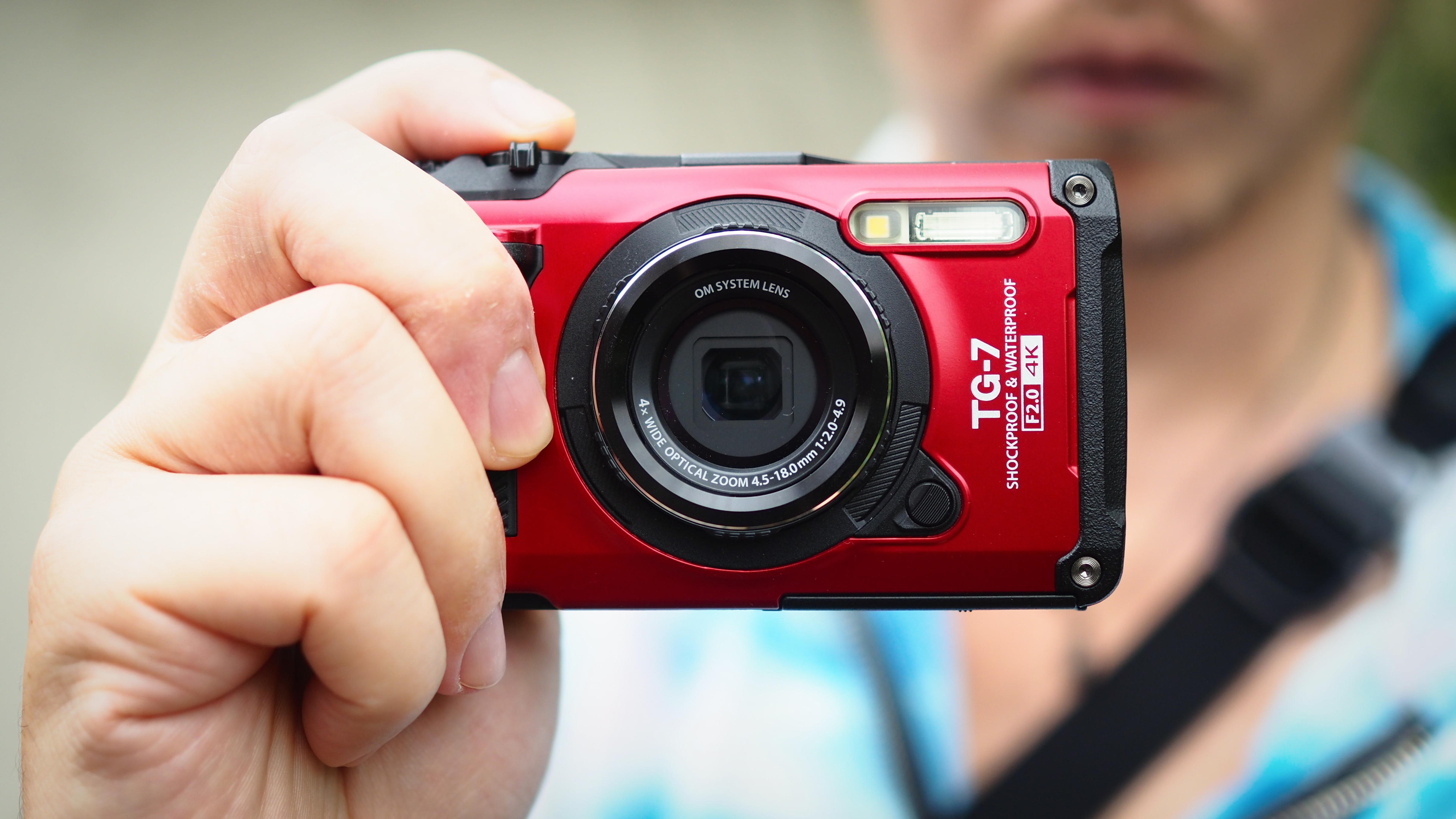

Specifications
Reasons to buy
Reasons to avoid
✅ You want GPS: With its built-in GPS, you can geotag your shots to remember all your fantastic holiday memories.
✅ You want a zoom function: with a 4x optical zoom, this is the perfect camera to take to the beach or into the ocean and always get the shot.
❌ You want something new: This is practically the same as its predecessor, the Olympus Tough TG-6.
Since 2021, Olympus cameras have been sold under the OM System name. The Olympus TG-6 was my previous favorite waterproof camera, and it has been reborn as the OM System TG-7.
Its specs are pretty much identical – which is a good thing in my book, as it got everything right already – but crucially the exterior has had a bit of a redesign, with a steeper grip on the front and a thumb rest on the back that makes this much easier to hold when my hands are wet.
I really love the built-in macro and microscope settings, which enable you to take amazing close-ups, and OM's Field Sensor System records GPS coordinates, altitude / depth, ambient temperature and compass direction with your shots.
The TG-7 shoots 4K 30p video and FullHD at up to 120p for slow-motion, you can even crank it all the way to 480p for super-duper-slow-mo in SD. It has a useful 25-100mm optical zoom lens, with a specially protected lens and rear screen to save it from knocks and drops.
Speaking of, it's waterproof to 50 feet / 15 meters, freezeproof to 14°F / -10°C, shockproof to drops from 7 feet / 2.1 meters and crushproof to 220 pounds / 100 kilos. Plus the WiFi connection means you can use your phone to shoot remotely, as well as quickly transfer files for easy social sharing.
Straightforward but sophisticated, this is simply the best waterproof camera around.
Read my full OM System Tough TG-7 review
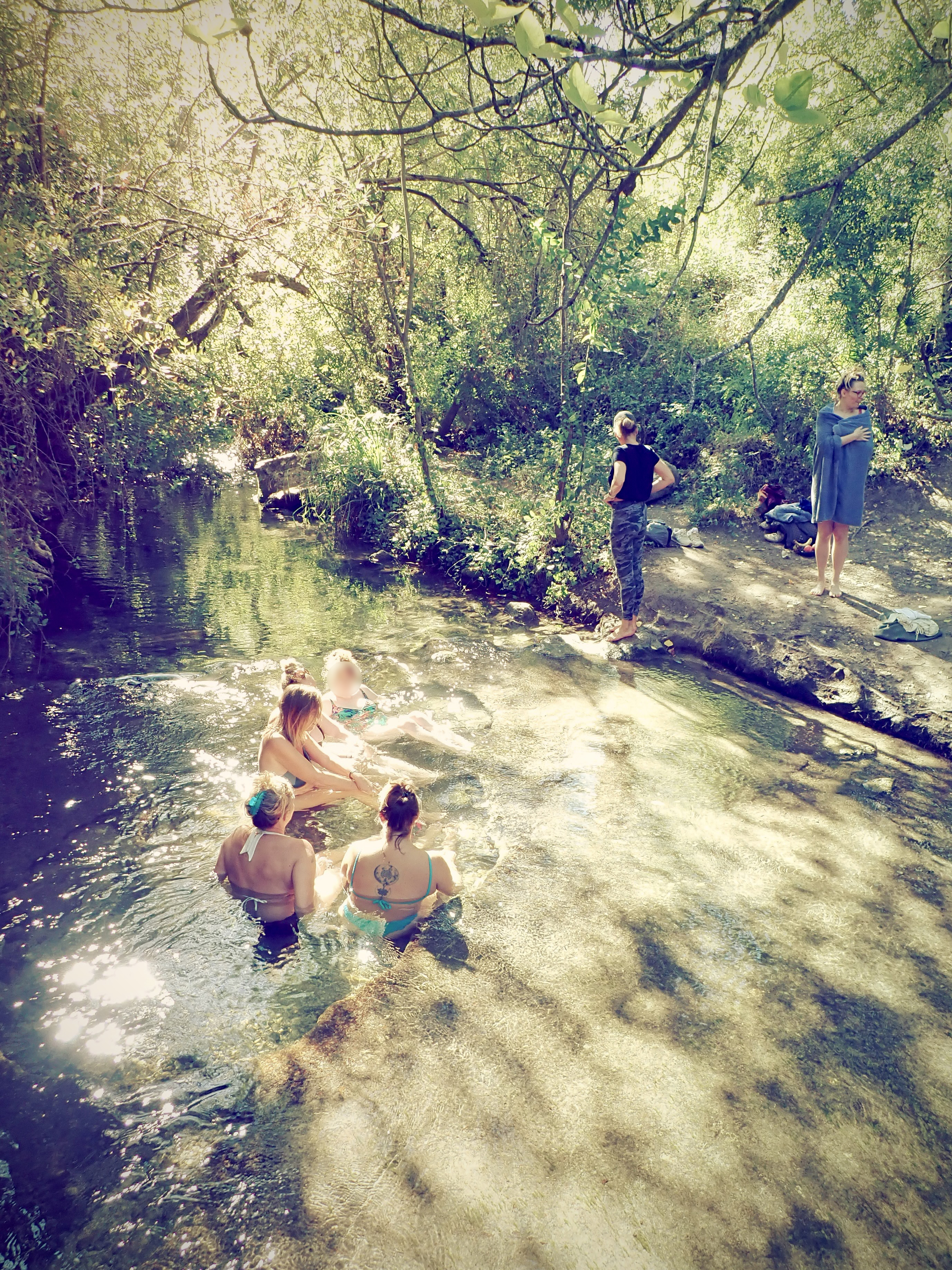
Waterproof depth | Waterproof to 15m/50ft the Tough TG-7 is the perfect water companion while on holiday | ★★★★½ |
Features | With 12MP stills, 4K video and 25mm-100mm lens its extremely versatile | ★★★★½ |
Value | For its features and toughest this is a good as it gets, but you will pay a higher price | ★★★★ |
Best budget waterproof camera
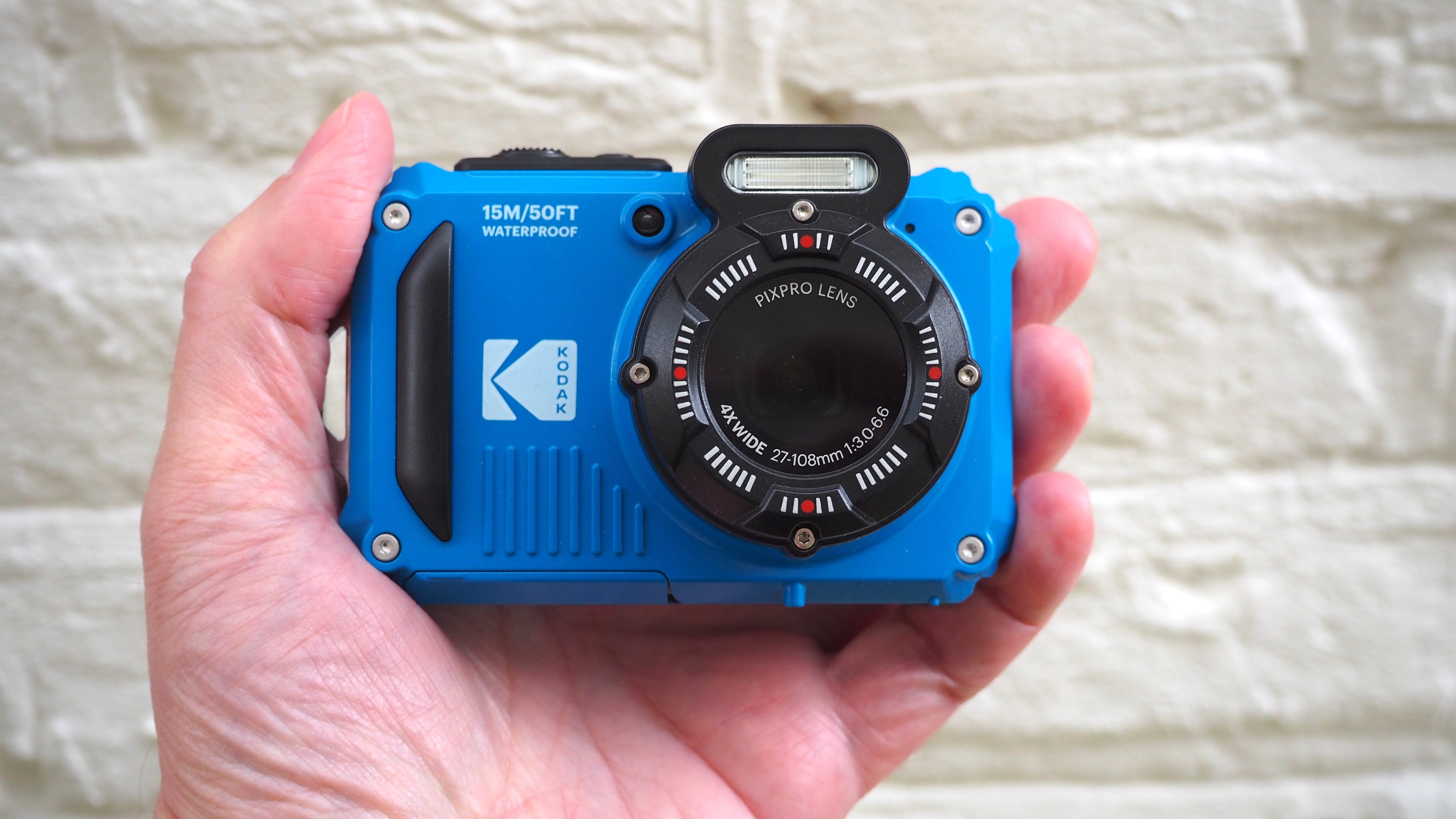
Specifications
Reasons to buy
Reasons to avoid
✅ You want something cheap: Under the $200/£200 mark this is a perfect little camera to have by the beach or poolside.
✅ You want to share to your phone: Get the image right to your phone with its built-in Wi-Fi connectivity.
❌ You want 4K video: Specs were cut to fit the price, therefore Full HD 1080p is the highest resolution possible.
Kodak is fast becoming one of the main players in the compact camera scene, with an impressively diverse range – and this waterproof zoom point-and-shooter is a great example of what the iconic brand is still capable of.
The emphasis here is on delivering value for money, significantly undercutting the cost of the Ricoh and the OM System options – which means a couple of compromises.
This means that you need to be prepared not to get 4K video; you even don't get a mains plug for the USB charging lead, on the reasonable assumption that you already own something you can use to charge it.
That said, you still get all the waterproofing and shock resistance that you'd expect from a rugged camera – and unlike the Ricoh option, you also get built-in WiFi! For the money, I'm very impressed with what this robust little camera has to offer.
Read our full Kodak Pixpro WPZ2 review

Waterproof depth | At 15m/49ft this is one of the best rated budget options on the market | ★★★★½ |
Features | With 16MP stills and a 27-108mm lens it offers great value, but "only" Full HD video | ★★★½ |
Value | For the specs and waterproof rating this is the best value around | ★★★★★ |
Best entry-level waterproof camera
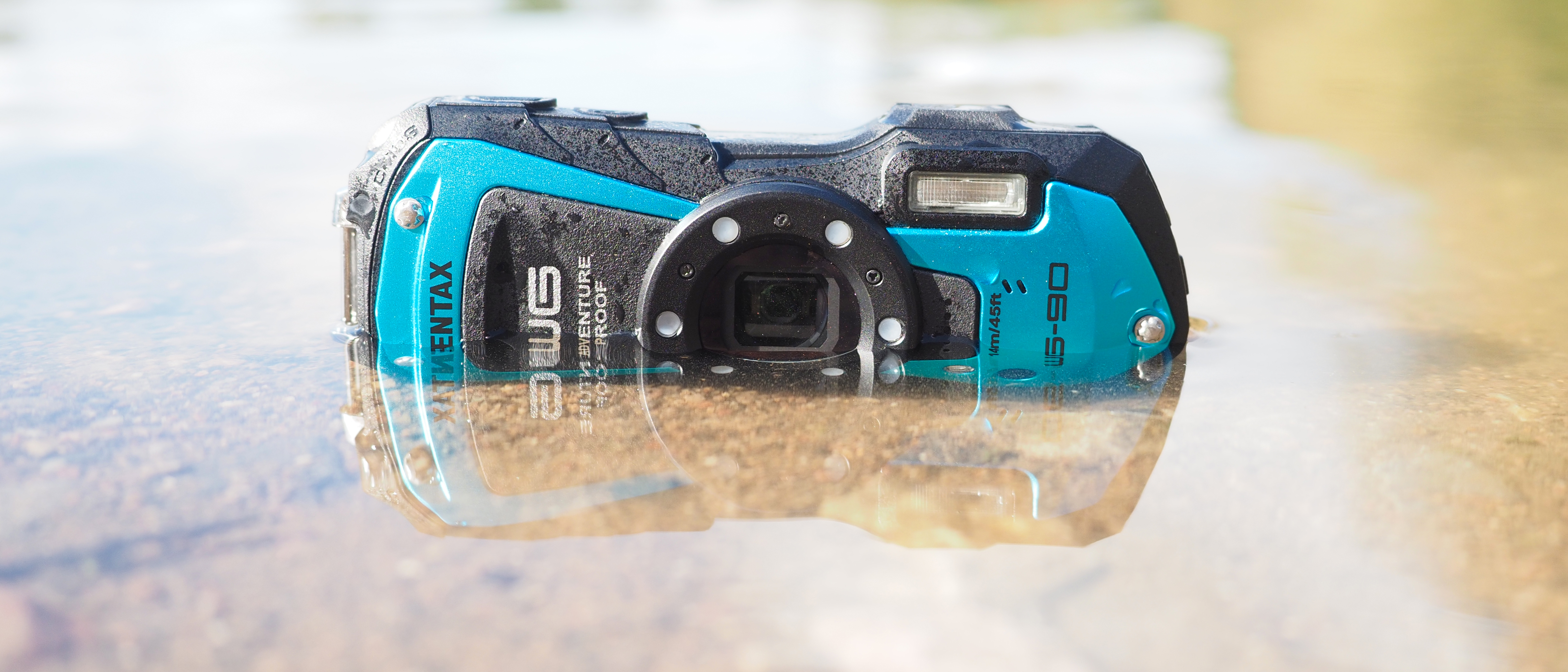
Specifications
Reasons to buy
Reasons to avoid
✅ You have a limited budget: Being a mid-priced camera, this offers great bang for your buck.
✅ You want good resolution: At 16 megapixels, this is a great way to get high-res still on a budget.
❌ You want wireless connectivity: Sadly, no Wi-Fi or Bluetooth connectivity is available, so you will have to download your stills and video with a cable or a card reader.
❌ No GPS: if you want geo-tagging, this is not the camera for you
Along with OM System, Pentax is one of the only brands still producing high-end waterproof cameras – ranging right up to its industrial-grade G900 models.
The WG-90 is an mid-range model, but impresses with its ability to be taken to depths of 45 feet / 14 meters without additional housing and can be dropped from heights of 5 feet / 1.6 meters.
It also competes with the resolution of the best cameras on this list, thanks to its backside-illuminated 16MP sensor for crisp stills, and FullHD.. I also love that you get a greater zoom than the Tough, with a 28-140mm range, along with GPS geo-location tagging.
I'm not a fan of the menu system, as the interface feels a bit "cheaper" than the more premium UI of the Tough, and I really miss the lack of WiFi – which means that you need to take out the memory card or use a physical cable to transfer any photos you want to share.
Otherwise, though, this is a great alternative to the Tough – and often can be found slightly cheaper.
Read our full Pentax WG-90 review

Waterproof depth | Rated at 14m/45ft this is a good range for those that love to snorkel | ★★★★ |
Features | A decent 16MP sensor with a versatile 28-140mm lens. But lacks 4K, GPS and WiFi. | ★★★½ |
Value | If our top-rated compact is too rich, this is a good alternative | ★★★★ |
Best waterproof camera for diving
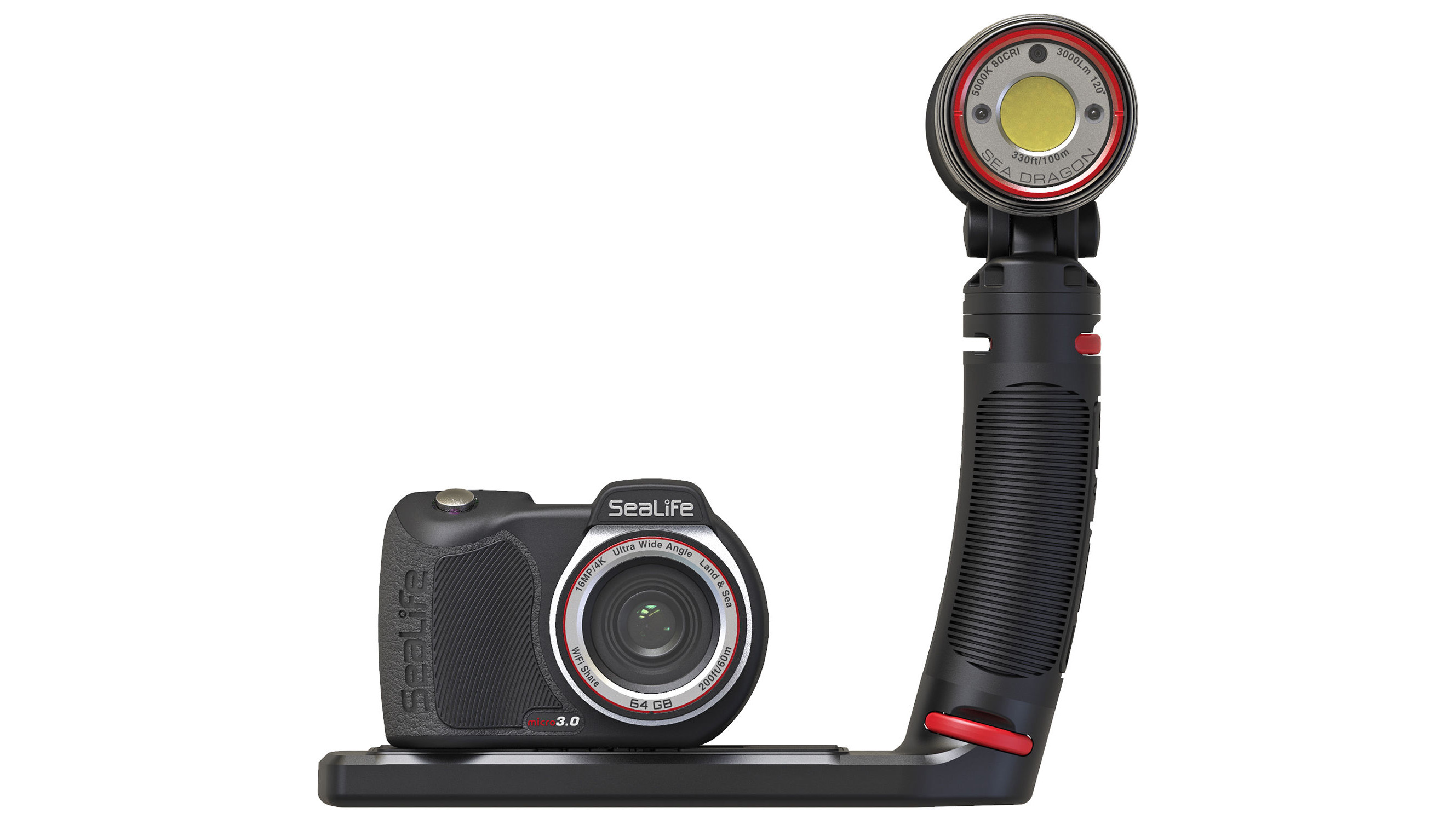
Specifications
Reasons to buy
Reasons to avoid
✅ You want 'fool-proof': With massive buttons, 16GB of internal memory, and waterproof down to 60m it's the perfect pickup and dive camera.
✅ You want to capture everything: With its fixed 19mm lens, you can be sure to capture everything you see and more, so you will never miss a moment.
❌ You want a zoom lens: Unfortunately, it has a fixed 19mm-equiv f/2.8 lens, so all of your images are going to be wide or you have to get up close to your subjects
SeaLife cameras are the most serious underwater option available without having to get into buying separate underwater housings and optical ports for your mirrorless camera or DSLR.
The ability to be able to be taken down to depths of 200 feet / 60 meters is deeply(!) impressive, but it is photographically able too, thanks to a 16MP Sony-derived sensor and the ability to shoot RAW files.
The camera is permanently sealed to safeguard against any possible leaks and weighs just 329g. So, there's no memory card needed, as you use the 16GB of built-in storage instead to save your images and videos.
You can buy the camera on its own but, if you are using this for deep dives (and that really is the point of a camera like this), I strongly recommend looking at the various kits including one or two of SeaLife's powerful Sea Dragon LED lights.
These can output at least 3000 lumens to illuminate murky underwater depths, while also acting as chunky ergonomic carrying handles – which are really handy when suited up with all your Scuba gear.
Read our full SeaLife Micro 3.0 review

Waterproof depth | Built for divers, you can go 60m/200ft with no issues | ★★★★★ |
Features | With its 16MP camera and 4K video is a great option for divers | ★★★★½ |
Value | Built for divers, you're going to pay a higher premium to dive deeper | ★★★★ |
Best waterproof action camera
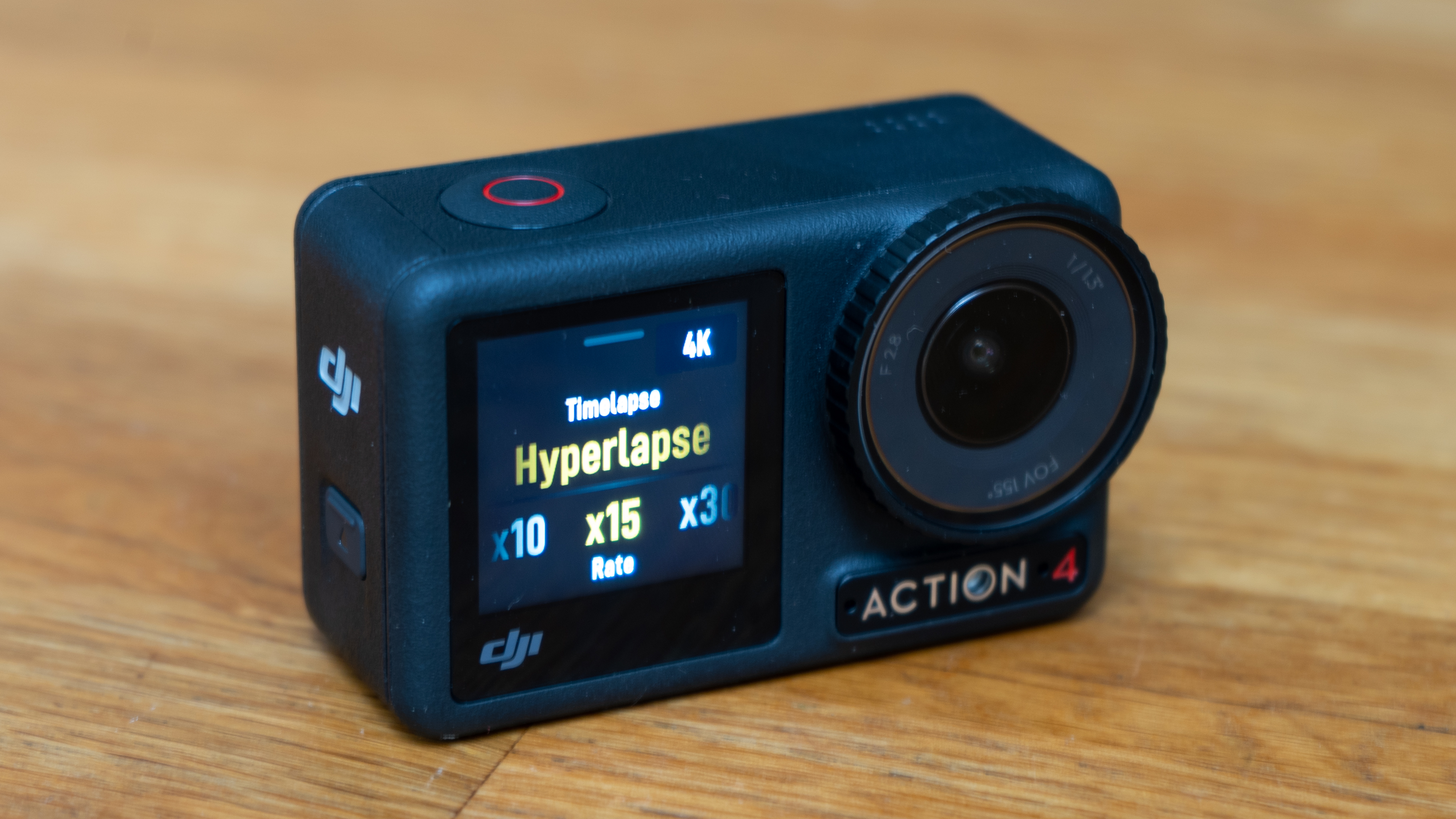
Specifications
Reasons to buy
Reasons to avoid
✅ You want a good all-rounder: Whether you're spending time and the beach or within the ocean, this action cam can capture everything on or off the beach.
✅ You want great videos: With its 4K video quality and low-light performance, you can be sure your video will always look amazing.
❌ You want best-quality stills: With only 12MP stills on such a small sensor, there are better options on the market (such as the more recent DJI Osmo Action 5 Pro)
All the best action cameras are designed to be waterproof. But while there are newer and better dedicated action cams, if you simply want an H₂0-friendly option then I think the Action 4 offers the best price:performance ratio.
Its underwater credentials are impressive: it can be taken to depths of 59 feet / 18 meters straight out of the box, and can dive to 196.8 feet / 60 meters with an optional casing, if you want to use it for scuba diving.
As with all action cameras, the camera is primarily designed for shooting wide-angle video – showing yourself or giving a first-person view. As such the stills capability is a tad disappointing, offering a 12MP image on a relatively small 1/1.3in sensor.
But the video it produces is a lot less noisy than many of its rivals, with fantastic image stabilization – and recording in 4K at up to 120fps and FullHD up to 240fps. So the Action 4 is a fantastic choice for filming and is probably your best option if wide-angle video is more important to you than stills.
Do note that there is a more recent DJI Action 5 Pro, which increases the stills resolution and the battery life – however the Action 4 is a much better value option for most people.
Read our full DJI Osmo Action 4 review
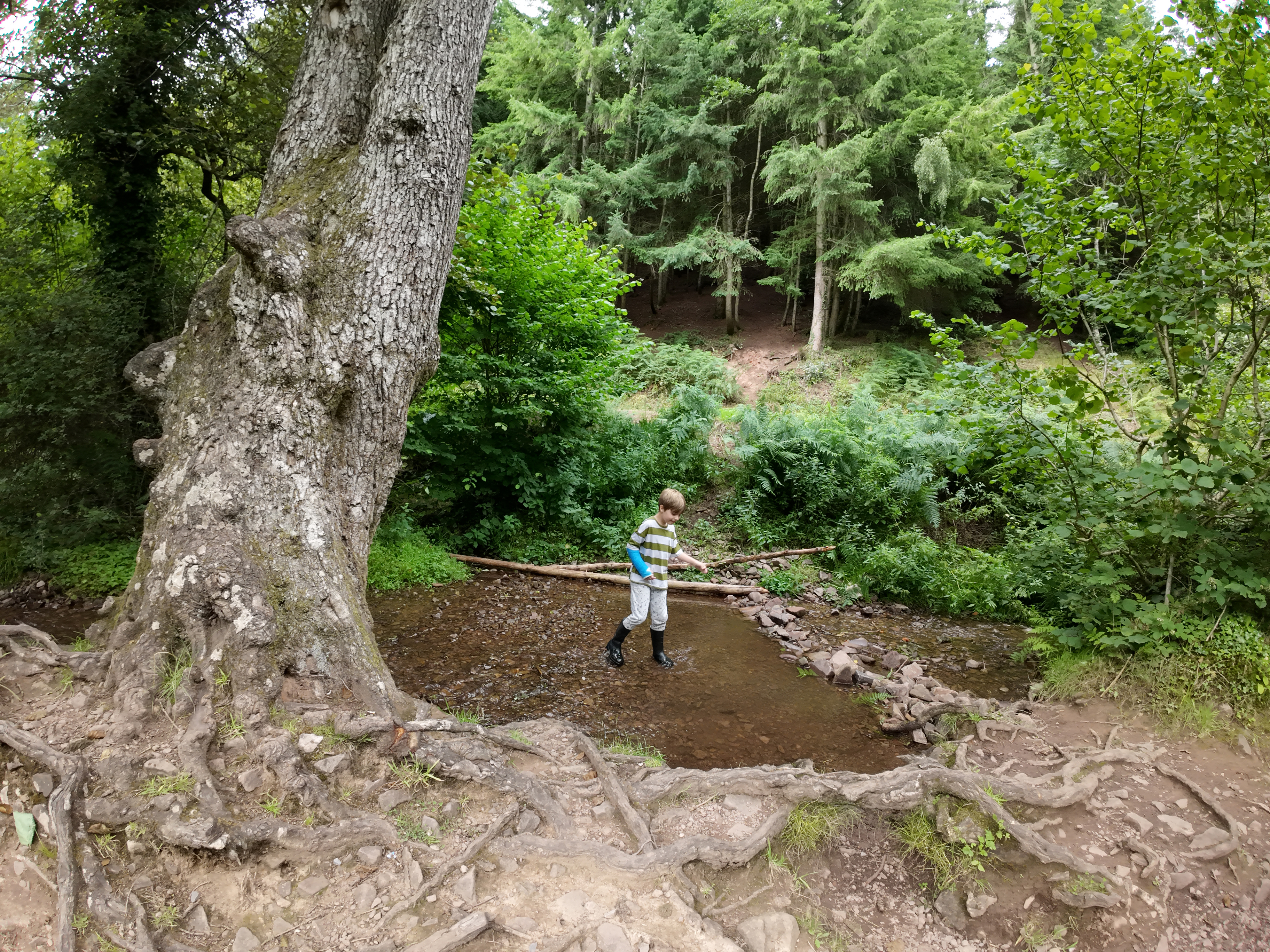
Waterproof depth | With just a 18m/59ft rating it offers good mid-tier spec. An optional housing is available if you need to dive deeper | ★★★★ |
Features | 4K video at its heart, and 12mp stills and great stablization, this a winner fro most people | ★★★★½ |
Value | For the price, this is the best video option for most users, and it can be used away from the pool or sea too | ★★★★½ |
Best disposable waterproof camera
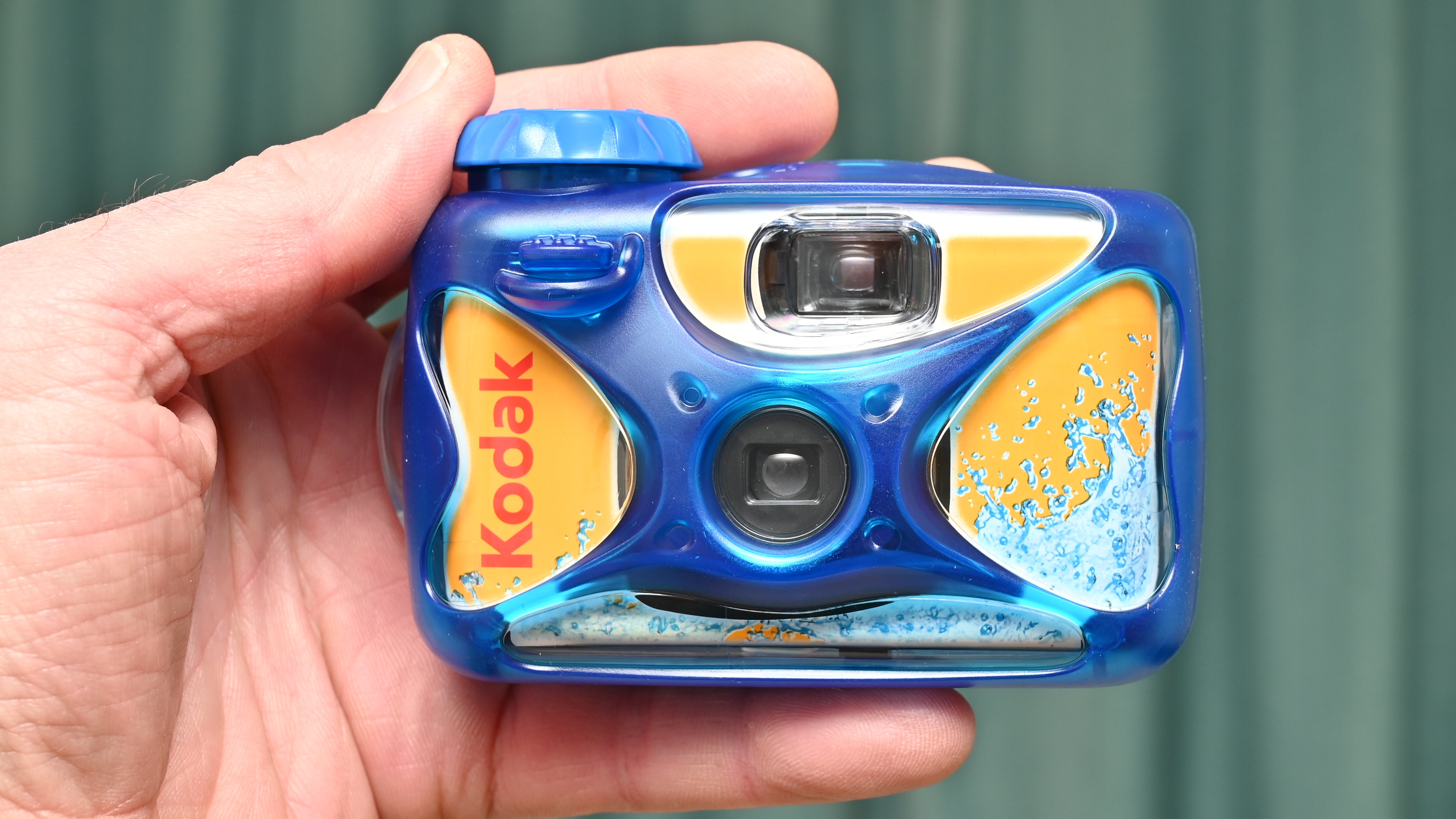
Specifications
Reasons to buy
Reasons to avoid
✅ You want to shoot film: This is probably your only 'simple' option to shoot color film at a reasonable price.
✅ Film included in the price: Given the cost of 35mm color film these days, this is a stellar deal!
❌ You want to use it all the time: Sadly, this is a single-use camera, although at least the film processing company should pass it along for recycling.
❌ You want digital images: This is a film camera, so if you want digital versions of your photos you will have to scan the film or the prints, or pay the processing company to do it.
Underwater disposable film cameras are your route to getting the cheapest underwater camera. These come preloaded with film, and are not re-usable, and you do have to pay extra for the processing of your pictures. But they are still a brilliantly cheap way to take photos underwater - or to use on the beach – and affordable enough to give to give to kids to play with on a pool holiday.
The Kodak Sport is good down to depths of 50 feet (15m) which would even make it attractive to the snorkeler. It comes preloaded with a 27-exposure roll of ISO800 Kodak MAX color print film - which you will obviously have to wait for (and pay for) to be processed before you see your pictures. In our tests, we found that the camera gave pleasing results for a disposable - but only in good light; with no flash and a fixed exposure exposures taken indoors are unprintable.
At a time when there’s an increased emphasis on sustainability, it’s worth adding that the Kodak Sport has a modular design where components are designed to be recycled or re-used after the processing company has developed the film – so calling it ‘disposable’ isn’t entirely accurate.
Read more: Kodak Sport review

Waterproof depth | at just 15m/50ft its not the best - but it is the only analog option around | ★★★½ |
Features | 27-exposures of gorgeous 800 ISO rated color film | ★★★½ |
Value | This is the cheapest around, and its film too! | ★★★★★ |
How to choose the best waterproof camera
When we talk about waterproof cameras, there are a number of different types of cameras we can mean. We've divided our guide into sections accordingly, so here are some quick explanations of the categories.
Waterproof compacts are a whole lot like ordinary compact cameras: a self-contained camera with a fixed lens on the front. Some of them have a zoom lens, and this gives them an advantage over action cameras (see below), which tend to have lenses with a single fixed focal length. One thing that marks out most waterproof compacts is they tend to come in bright colors, in contrast to the staid blacks, silvers, and greys of mainstream cameras. This makes them easier to see if you drop them in the water.
Action cameras are much smaller than waterproof compacts. They are therefore easier to mount or wear on a harness or helmet, making them great for watersports. Their video specs also tend to be better, with resolutions of 4K and higher and competitive frame rates. The aforementioned fixed lens means that you're stuck with a fixed perspective (which is why GoPro-shot videos all tend to have the same fishbowl look).
You don't have to restrict yourself to digital! There are also some handy underwater disposable film cameras, which work just like the single-use cameras you used to take on holidays, with the crucial difference being that they can be taken underwater. They can't shoot video, of course, and you have to pay extra to have the film processed.
It is also worth noting that almost any camera can be made complely waterproof if put in the right type of underwater camera housing.
How we test cameras
When testing waterproof cameras we pay particular attention to how easy they are to use when using them underwater, where camera controls are not a straightforward to see or use. Image and video quality is judged by testing the cameras in a variety of different real-world lighting conditions - and then comparing the results agains the hundreds of other cameras that our team of reviewers have tested.
Find out more about how we test and review on Digital Camera World
Get the Digital Camera World Newsletter
The best camera deals, reviews, product advice, and unmissable photography news, direct to your inbox!

James has 22 years experience as a journalist, serving as editor of Digital Camera World for 6 of them. He started working in the photography industry in 2014, product testing and shooting ad campaigns for Olympus, as well as clients like Aston Martin Racing, Elinchrom and L'Oréal. An Olympus / OM System, Canon and Hasselblad shooter, he has a wealth of knowledge on cameras of all makes – and he loves instant cameras, too.
